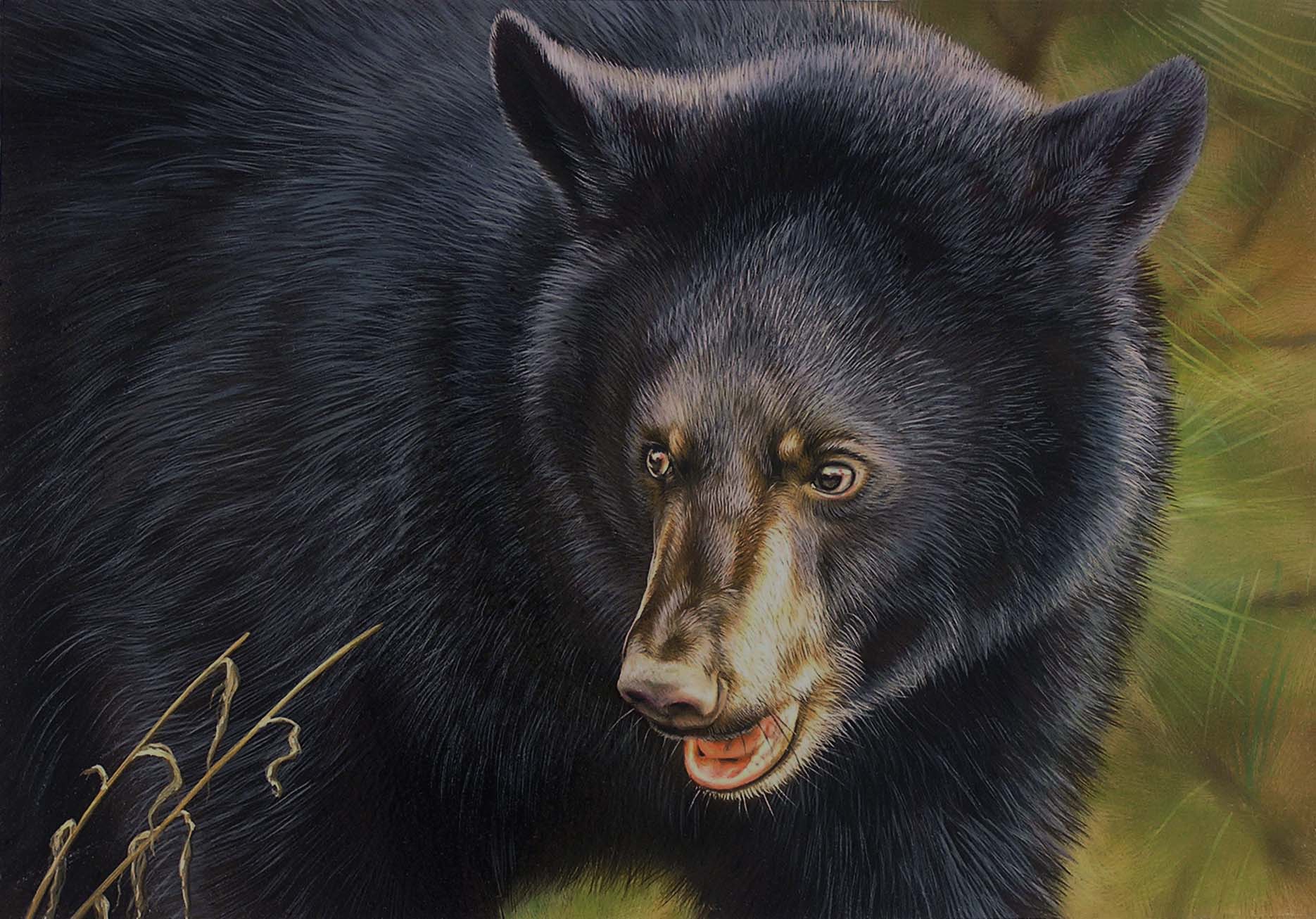Maryland Black Bear Conservation Stamp

Winning entry for 2019-2020
"Explorer" by Rebecca Latham of Hastings, Minn.
Why are there more Black Bears?
The growing black bear population is the result of several factors. Since the early
1900s, the quality of Maryland's wetlands and forest lands have been improving, following the end of decades of unregulated cutting of trees and destruction of wetland habitat in Western Maryland. Improving habitat conditions throughout the tri-state region prompted bear relocation efforts by the state of Pennsylvania. The success of this program, coupled with various bear management programs employed by West Virginia, helped generate a spillover of bears into Maryland during the 1970s and 1980s. The improving habitat conditions in Western Maryland invited black bears back to an area they had historically
occupied. Public support of law enforcement efforts to thwart illegal hunting of black bears insured that black bears would succeed in their new habitat.
How has the department responded to nuisance bear complaints?
One of the objectives of Maryland's Black Bear Management Plan is to minimize bear-human conflicts by helping the public cope with nuisance bear problems in a manner that will be effective and have minimal adverse impact on the bear population. Department of Natural Resources has responded to these complaints by providing technical assistance and educational materials to landowners. Click here for information about Living with
Black Bears.
Important information about black bears and humans.
During the spring and early summer months, black bears do become more active. This
increase in activity is due to the fact that young bears (about 1 1/2 years old) are chased away by their mothers to find a home of their own. Also during June and July, black bears are breeding and older males will wander long distances in search of a mate. Department of Natural Resources Wildlife and Heritage Service warns that people who come upon black bears should treat them with respect and leave them alone! Bears usually pose no threat to humans unless they are harassed, pursued, cornered, or have cubs with them. The department has put together some safety tips concerning the black bear.
How Can I Help?
Visit the online store to make a purchase or to donate to the program.
For more information contact:
Karina Stonesifer
301-777-2136
[email protected]
MD DNR - Wildlife and Heritage Service
12512 Pleasant Valley Rd
Flintstone MD 21530